Discover how to protect your clients from synthetic lashes allergies! Learn symptoms, prevention tips, and treatment options. Click to safeguard your salon!
Dive into the world of synthetic lashes allergies and ensure client safety. Explore symptoms, prevention, and treatments to safeguard your clientele.
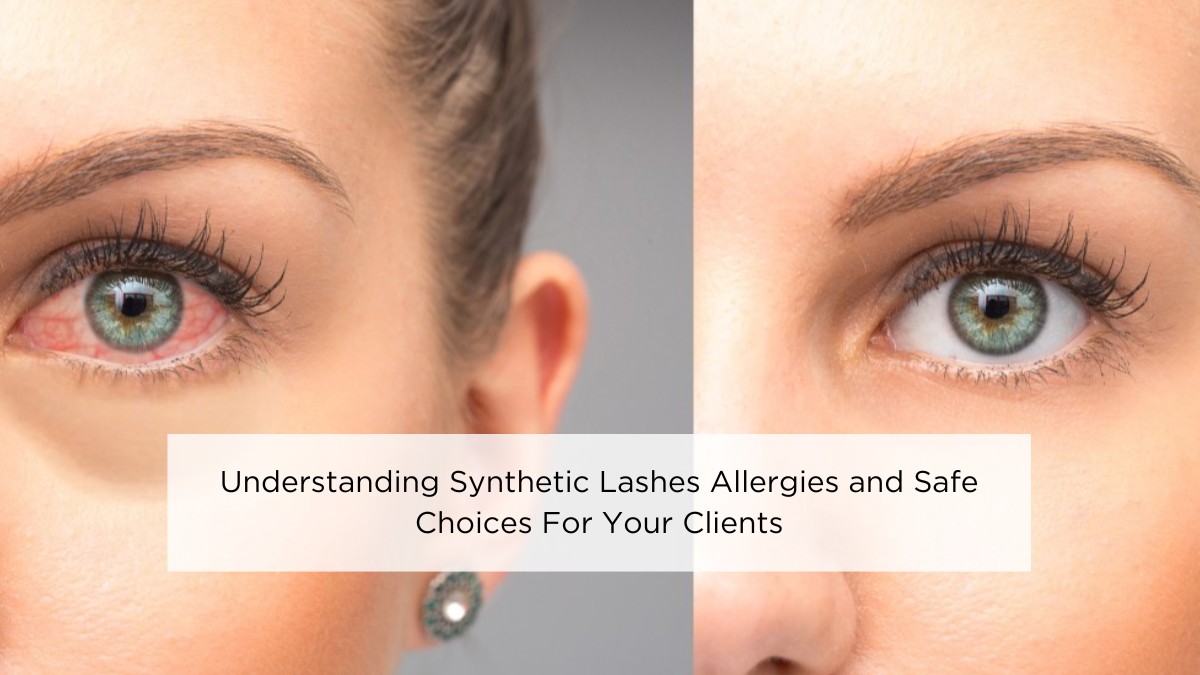
Exploring Synthetic Lash Allergies
Uncover the world of synthetic lashes allergies. Learn to identify symptoms, distinguish between irritation and allergy, and understand risk factors.
Recognizing Common Symptoms of An Allergic Reaction To Synthetic Lashes
Identifying symptoms of allergic reactions to synthetic lash extensions is essential for ensuring the safety and comfort of your clients. By understanding these symptoms, lash artists can promptly address any potential issues and provide appropriate care.
- Remove the Lash Extensions Immediately if an Allergic Reaction Occurs: If a client experiences an allergic reaction to lash extensions, promptly remove the extensions out of the natural lash line to prevent further irritation and minimize discomfort. This immediate action helps mitigate the severity of the reaction and allows the skin to recover more quickly.
- Use Over-the-Counter Antihistamines to Alleviate Symptoms: Over-the-counter antihistamines can help alleviate allergy symptoms such as itchiness, redness, and swelling associated with allergic reactions to synthetic lashes, including glue allergies. Encourage clients to follow the recommended dosage instructions and consult with a healthcare professional if symptoms persist or worsen.
- Consult with a Dermatologist or Ophthalmologist for Further Treatment Options: For severe or persistent allergic reactions, it’s essential to seek professional medical advice from a dermatologist or ophthalmologist. These specialists can assess the extent of the reaction, provide personalized treatment recommendations, and offer guidance on long-term management strategies to prevent future allergic episodes.
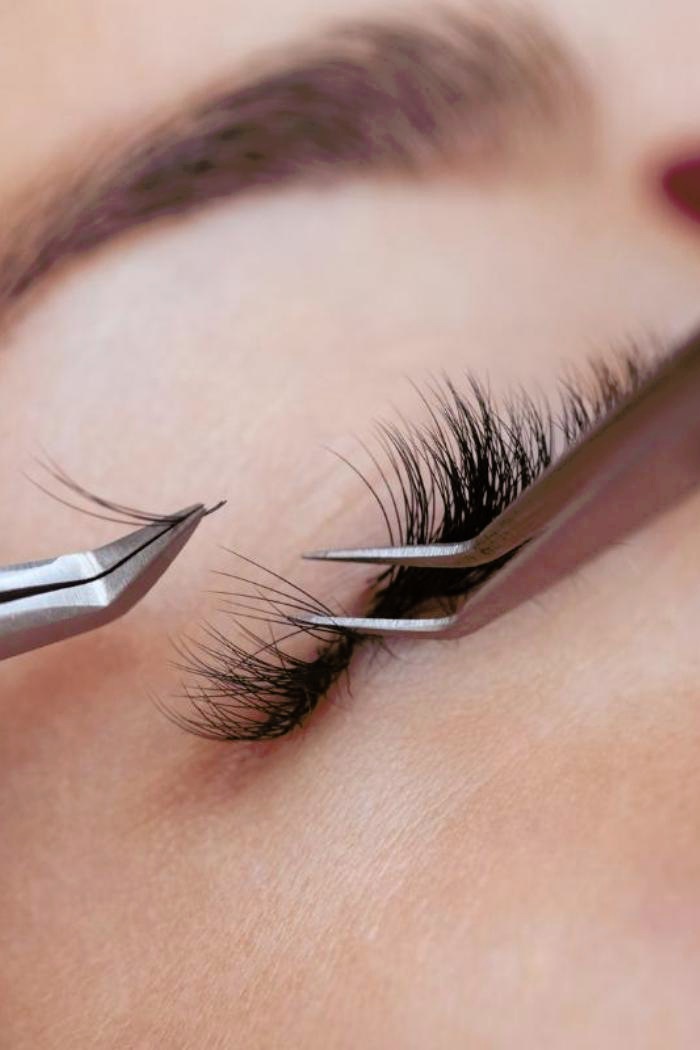
By being vigilant for these common symptoms of irritation, lash artists can promptly recognize and address allergic reactions to synthetic lash extensions. This proactive approach ensures the well-being of clients and helps maintain a positive reputation for your lash business.
Differentiating Experiencing Irritation from Synthetic Eyelash Allergy
Distinguishing between irritation and allergic reactions to synthetic lash extensions is crucial for effective client care.
- Immune Response: Allergic reactions involve the body’s immune system reacting to perceived threats, such as allergens in lash materials or adhesives (for example, lash glue products that contain latex or formaldehyde). This response may cause an allergic reaction like inflammation and discomfort in the affected area, especially on sensitive skin types.
- Improper Application or Low-Quality Products: Irritation may occur due to factors like improper application techniques or the use of low-quality lash materials. Clients experiencing irritation may notice temporary discomfort or redness shortly after lash application.
- Persistence of Symptoms: Allergic reactions to synthetic lash extensions tend to persist over time, with symptoms worsening or remaining constant. In contrast, irritation and sensitivity from improper application or low-quality products may subside relatively quickly once the irritating extensions are removed.

By understanding the differences between irritation and allergic reactions, lash technicians can provide appropriate care and guidance to their clients. This ensures a positive experience and promotes client satisfaction and loyalty.
Risk Factors for Synthetic Lash Allergies
Identifying the risk factors for allergic reactions to synthetic lash extensions can help prevent adverse outcomes for clients.
- Previous Allergic Reactions to Cosmetics: Clients with a history of allergic reactions to cosmetics may be more susceptible to developing allergies to synthetic lash materials or adhesives. This heightened sensitivity increases the likelihood of experiencing adverse reactions during or after lash application.
- Sensitivity to Adhesives or Synthetic Materials: Individuals with existing sensitivities to adhesives or synthetic materials are at a higher risk of experiencing allergic reactions to synthetic lash extensions. These individuals may react adversely to the chemicals and compounds present in lash adhesives or the synthetic fibers used in the extensions.
- History of Skin Conditions like Eczema or Dermatitis: Clients with a history of skin conditions such as eczema or dermatitis may have compromised skin barriers, making them more susceptible to allergic reactions. These conditions can weaken the skin’s natural defenses, increasing the risk of irritation or inflammation in response to lash materials or adhesives.
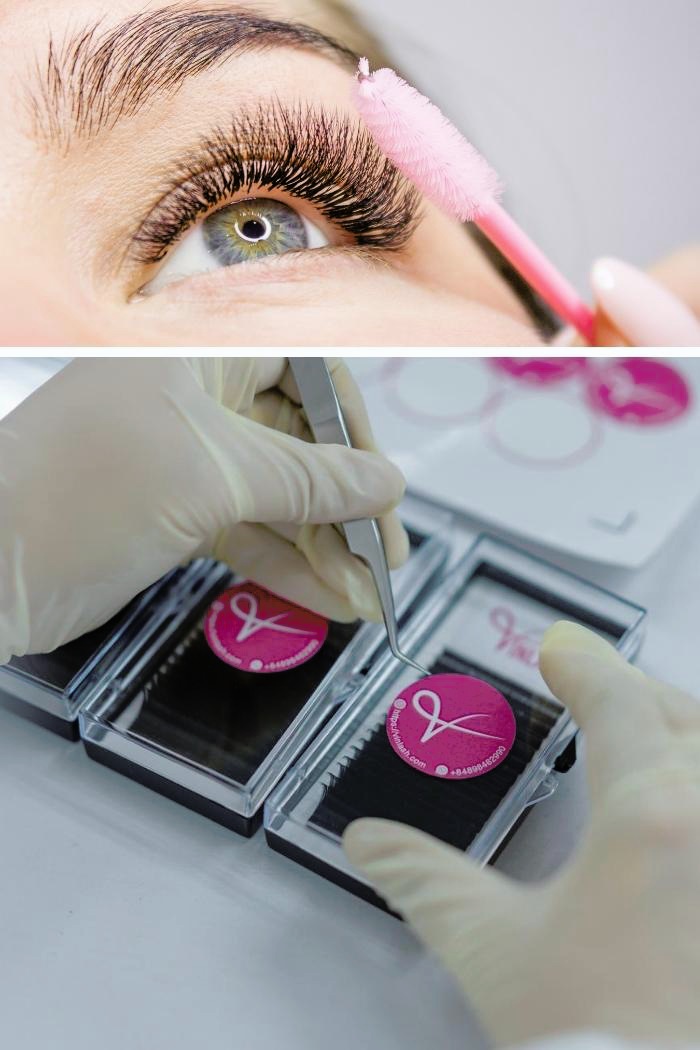
By recognizing these risk factors, lash technicians can take proactive measures to minimize the risk of allergic reactions for their clients. This includes conducting thorough consultations, patch testing, and selecting appropriate products tailored to each client’s unique needs.
Safeguarding Your Clients From Synthetic Eyelash Extension Allergies
Discover essential strategies for safeguarding your clients from allergic reactions to synthetic lash extensions. Learn about selecting hypoallergenic lashes, the importance of patch testing, and ensuring sterile application.
Selecting Hypoallergenic Synthetic Lashes To Prevent Allergies
Choosing hypoallergenic synthetic lashes is paramount in preventing allergic reactions and ensuring client comfort and safety.
- Look for Products Labeled as Hypoallergenic: When selecting synthetic lashes for your clients, prioritize products that are specifically labeled as hypoallergenic. These lashes are formulated to minimize the risk of allergic reactions, making them suitable for individuals with sensitive skin or allergies.
- Choose Lashes Made from High-Quality Synthetic Materials: Opt for lashes made from synthetic synthetic materials with high quality standards like mink or silk to reduce the likelihood of allergic responses. High-quality synthetic lashes like synthetic mink lashes or synthetic silk lashes are less likely to contain irritants or have ingredients known as allergens that could trigger severe allergic reactions in sensitive clients.
- Consider Client Allergies and Sensitivities When Selecting Products: Take into account your clients’ individual allergies and sensitivities when choosing synthetic lash products. Conduct thorough consultations to identify any known allergies or sensitivities and select lashes that are compatible with their specific needs and preferences.
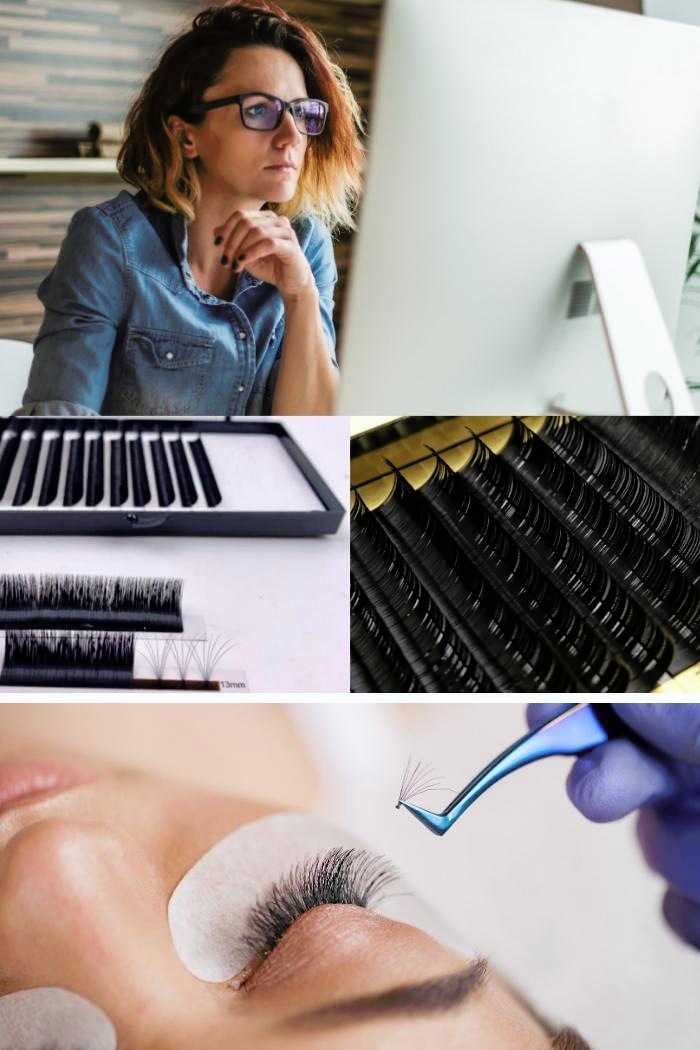
By prioritizing hypoallergenic synthetic lashes, lash technicians can proactively mitigate the risk of allergic reactions and ensure a positive experience for their clients. This thoughtful approach to product selection demonstrates a commitment to client safety and satisfaction.
Importance of Patch Testing On Preventing Synthetic Lash Allergies
Conducting patch tests before synthetic lash application is crucial in preventing allergic reactions and ensuring client safety.
- Conduct Patch Tests at Least 24 Hours Before Application: Prior to applying synthetic lash extensions, it’s essential to conduct patch tests on a small area of the skin at least 24 hours in advance. This allows time for any potential allergic reactions to manifest and ensures that clients are not at risk of experiencing adverse effects during the lash application process.
- Apply a Small Amount of Adhesive to the Skin Behind the Ear: During the patch test, apply a small amount of lash extension glue to the skin behind the client’s ear. This area is sensitive and mimics the delicate skin around the eyes, providing an accurate indication of how the client’s skin will react to the lash extension adhesive used during lash application.
- Monitor for Any Signs of Allergic Reaction To Eyelash Extension, Such as Redness or Swelling: After applying the lash adhesive, closely monitor the patch test site for any signs of allergic reaction, such as redness, swelling, or itching. If the client experiences any discomfort or adverse reactions, it’s essential to refrain from applying lash extensions and explore alternative options to ensure the client’s safety and well-being.
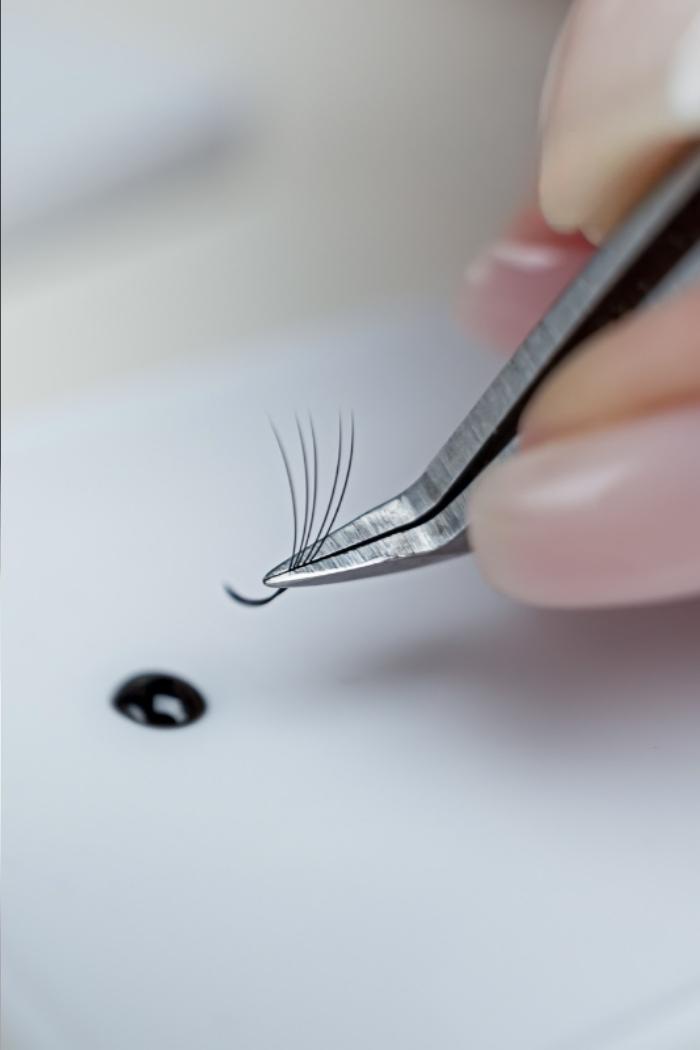
By incorporating patch testing into the lash extension process, lash technicians can proactively identify and prevent allergic reactions, ensuring a safe and comfortable experience for their clients. This demonstrates a commitment to client safety and helps maintain the reputation and integrity of the lash technician’s business.
Ensuring Sterile Synthetic Lash Extension Application To Avoid Allergies
Maintaining sterile conditions during synthetic lash extension application is vital in preventing allergic reactions and promoting client safety.
- Use Disposable Tools Whenever Possible: Opt for disposable tools, such as applicators and brushes, to minimize the risk of cross-contamination between clients. Disposable tools eliminate the need for sterilization between uses, ensuring a hygienic application process and reducing the potential for allergic reactions.
- Sterilize Reusable Tools Between Clients: For reusable tools, such as tweezers and scissors, ensure thorough sterilization between clients. Utilize autoclaves or chemical sterilization methods to effectively eliminate bacteria and pathogens, minimizing the risk of infection or allergic reactions due to contaminated tools.
- Maintain a Clean and Organized Workspace to Minimize Contamination: Keep your workspace clean and organized to prevent the accumulation of dust, debris, and other contaminants that could potentially trigger allergic reactions in sensitive clients. Regularly sanitize surfaces, storage containers, and equipment to maintain a hygienic environment conducive to safe lash extension application.
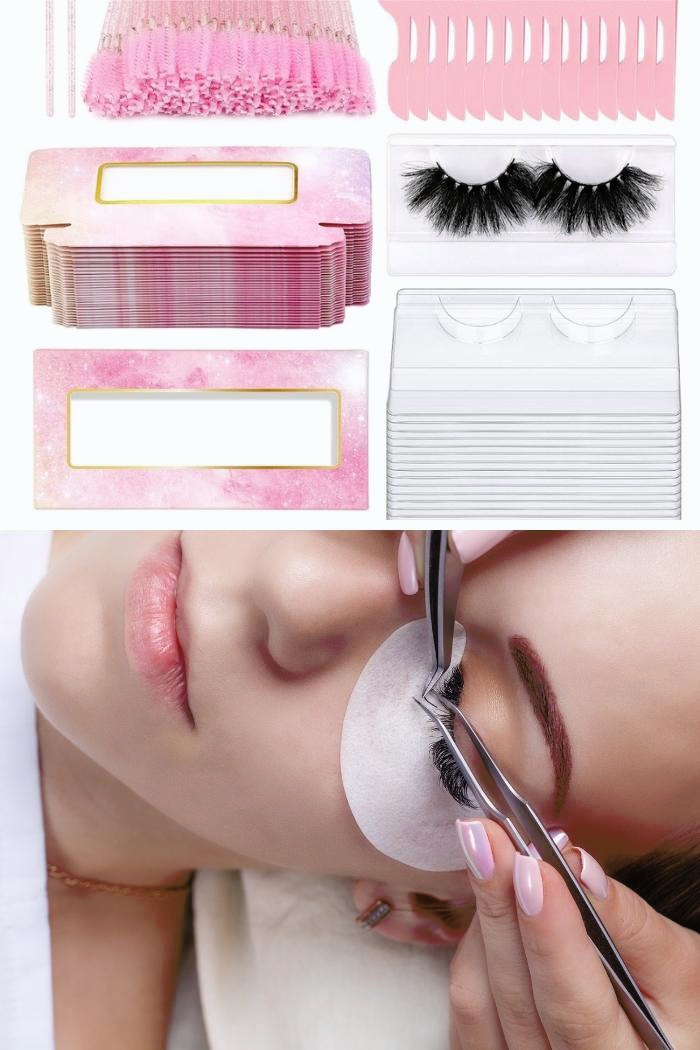
By adhering to strict sterilization protocols and maintaining a clean workspace, lash technicians can mitigate the risk of allergic reactions and ensure the safety and well-being of their clients. Prioritizing hygiene and cleanliness demonstrates professionalism and commitment to providing high-quality lash extension services.
Managing Synthetic Lash Allergies To Protect Your Clients
Discover effective strategies for managing synthetic lash allergies and protecting your clients’ well-being. Explore treatment options, preventive measures, and the importance of consulting eye experts.
Synthetic Extension Allergy Medications for Allergic Reactions
When faced with allergic reactions to synthetic lashes, it’s crucial to act swiftly and effectively to alleviate discomfort and ensure client safety.
- Remove the Lash Extensions Immediately To Reduce Irritation: If a client become allergic reactions when wearing lash extensions, promptly remove the extensions out of the natural lash line to prevent further irritation and minimize discomfort. Immediate removing lash extensions helps treat mild discomfort and reactions and allows the skin to recover more quickly.
- Use Over-the-Counter Antihistamines to Alleviate Symptoms: Over-the-counter antihistamines can help alleviate symptoms such as itching, redness, and swelling associated with allergic reactions to synthetic lashes. Encourage clients to follow the recommended dosage instructions and consult with a healthcare professional if symptoms persist or worsen.
- Consult with a Dermatologist or Ophthalmologist for Further Treatment Options: In case of severe symptoms or persistent allergic reactions, it’s essential to visit urgent care or speak with a healthcare professional like a dermatologist or ophthalmologist. These specialists can assess the extent of the reaction, provide personalized treatment recommendations, and offer guidance on long-term management strategies to prevent future allergic episodes.
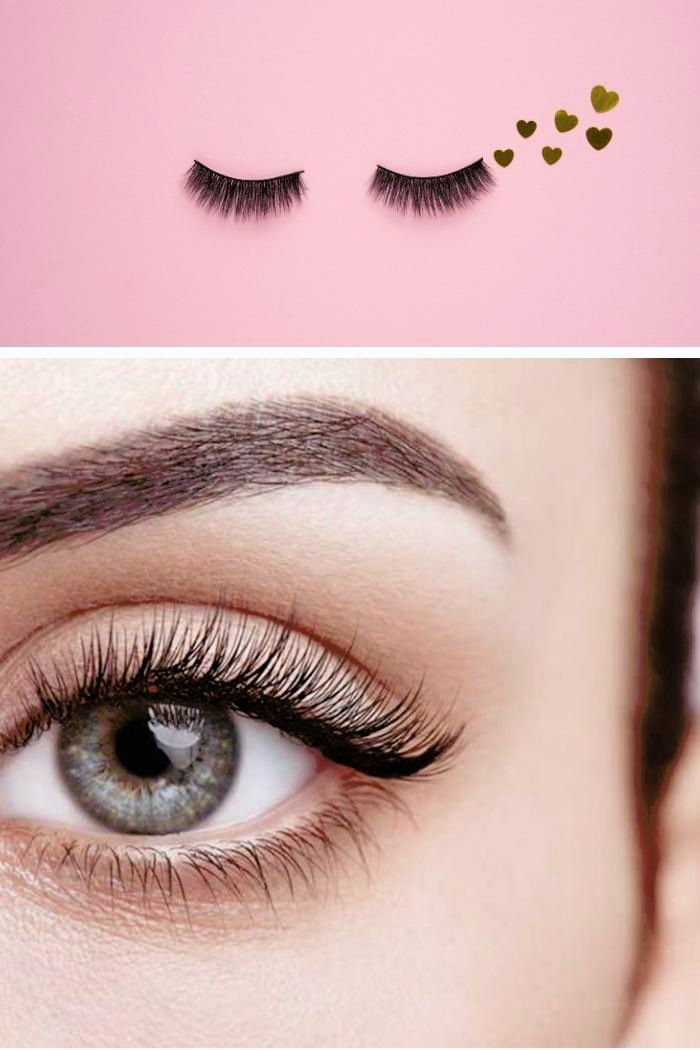
By promptly addressing allergic reactions to synthetic lashes and seeking appropriate treatment options, lash technicians can effectively manage client discomfort and ensure their safety and well-being. Collaboration with medical professionals enhances the level of care provided and promotes positive outcomes for clients experiencing allergic reactions.
Preventive Measures for Future Allergies On Synthetic Lashes
To prevent future allergic reactions to synthetic lashes, proactive measures and proper client education are essential.
- Advise Clients to Avoid Rubbing or Touching Their Eyes Excessively: Excessive rubbing or touching of the eyes can exacerbate irritation and increase the risk of allergic reactions. Encourage clients to refrain from rubbing their eyes and to handle their lashes with care to minimize irritation and allergic triggers.
- Educate Clients on Proper Lash Care and Hygiene Practices: Proper lash care and hygiene are crucial in preventing allergic reactions and maintaining lash health. Provide clients with detailed instructions on how to clean and care for their lashes, including gentle cleansing techniques and the use of lash-safe products. Emphasize the importance of keeping lashes clean and free from debris to reduce the likelihood of irritation and allergic responses.
- Encourage Regular Follow-up Appointments to Monitor for Any Signs of Allergies: Regular follow-up appointments allow for ongoing monitoring of clients’ lash health and the early detection of any signs of allergic reactions. Encourage clients to schedule routine check-ups to assess their lash condition and discuss any concerns or symptoms they may experience. Proactive monitoring enables prompt intervention and adjustments to prevent allergic reactions from escalating.
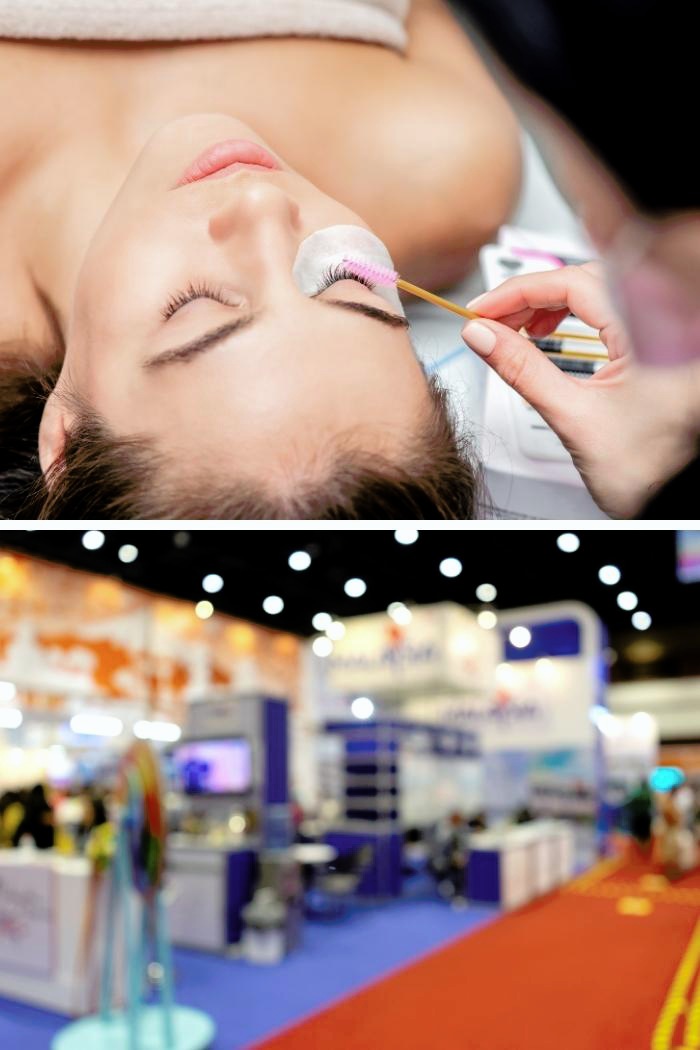
By implementing preventive measures and educating clients on proper lash care practices, lash technicians can help mitigate the risk of future allergic reactions to synthetic lashes. Encouraging open communication and regular follow-up appointments fosters a collaborative approach to maintaining lash health and ensuring client satisfaction and safety.
Consultation with Eye Doctor Experts On Synthetic Extension Allergies
For comprehensive management of synthetic extension allergies, consulting eye experts is essential.
- Refer Clients to an Ophthalmologist for Comprehensive Eye Exams: Ophthalmologists specialize in eye health and can conduct thorough examinations to assess any adverse reactions to synthetic lash extensions. Comprehensive eye exams help identify underlying issues and determine the best course of action for managing allergies effectively.
- Discuss Any Existing Eye Conditions or Allergies with the Client’s Healthcare Provider: Prioritizing open communication with the client’s healthcare provider allows for a holistic approach to addressing synthetic extension allergies. Sharing relevant information about existing eye conditions or known allergies enables the healthcare provider to tailor recommendations and treatment plans accordingly, minimizing the risk of adverse reactions.
- Collaborate with Eye Experts to Ensure the Client’s Safety and Well-being: Collaboration with eye experts, including ophthalmologists and optometrists, is key to ensuring the safety and well-being of clients with synthetic extension allergies. By working together, lash technicians and eye professionals can develop comprehensive management strategies, provide valuable insights, and offer personalized care to mitigate allergic reactions and promote optimal eye health.

Through proactive consultation with eye experts, clients can receive specialized care and guidance tailored to their individual needs, ensuring a holistic approach to managing synthetic extension allergies. By prioritizing collaboration and communication with eye professionals, lash technicians can enhance client safety, satisfaction, and overall well-being.
FAQs on Synthetic Lashes Allergies
- Are there any specific risk factors that increase the likelihood of synthetic lash allergies
Specific risk factors can increase the likelihood of synthetic lash allergies. Individuals with previous allergic reactions to cosmetics, heightened sensitivity to eyelash extension glue or synthetic materials, and a history of skin conditions like eczema or dermatitis are at a higher risk of experiencing allergic reactions to synthetic lashes or allergic to lash glue. It’s essential to consider these factors before applying synthetic lash extensions to minimize the risk of adverse reactions and ensure client safety.
- Can hypoallergenic synthetic lashes completely eliminate the risk of allergic reactions
While using a hypoallergenic set of synthetic lashes or hypoallergenic glue helps minimize allergic reactions, they cannot completely eliminate the risk. Factors such as individual sensitivities and improper application techniques can still lead to allergic responses. However, opting for hypoallergenic lashes can significantly reduce the likelihood of adverse reactions for many clients, providing a safer alternative for those with sensitivities. It’s crucial to conduct patch tests and consult with clients about their allergies before application to ensure the best possible outcome.
- How can I educate my clients about the potential risks and precautions associated with synthetic lash allergies
Educating clients about the potential risks and precautions associated with synthetic lash allergies is essential. Start by discussing common symptoms and emphasizing the importance of patch testing on the eye area before application. Provide information on proper aftercare practices and advise clients to seek immediate medical attention if they experience any allergic reactions. Encourage open communication, address any concerns or questions and make sure to inform them well for the best preparation for the procedure.
- What alternative options are available for clients who experience allergic reactions to synthetic lashes
Clients experiencing allergic reactions to synthetic lashes have alternative options to consider. These may include opting for hypoallergenic synthetic lashes, exploring natural-looking lash extensions enhancement techniques, or trying lash lifts and tints. Additionally, clients can explore non-adhesive eye makeup options or consult with a dermatologist or ophthalmologist for personalized recommendations tailored to their specific needs and sensitivities.
- How can lash technicians promote overall eye health while providing synthetic lash services
Lash technicians can promote overall eye health by emphasizing proper lash care and hygiene practices to their clients. This includes advising clients to avoid excessive rubbing or touching of their sensitive eyes, educating them on the importance of regular follow-up appointments to monitor for signs of allergies, and recommending gentle eye makeup removal techniques using oil-free products. Additionally, encouraging clients to maintain a healthy lifestyle, including staying hydrated and getting adequate sleep, can also contribute to overall eye health while enjoying synthetic lash services.
In summary, mastering synthetic lashes allergies safeguards clients’ eye health. With careful selection, patch testing, and expert guidance, clients can enjoy lash enhancements worry-free. It’s a balance of beauty and safety for all involved. Partnering with a reliable eyelash extensions supplier ensures that high-quality products are used, further promoting safety and client satisfaction.
